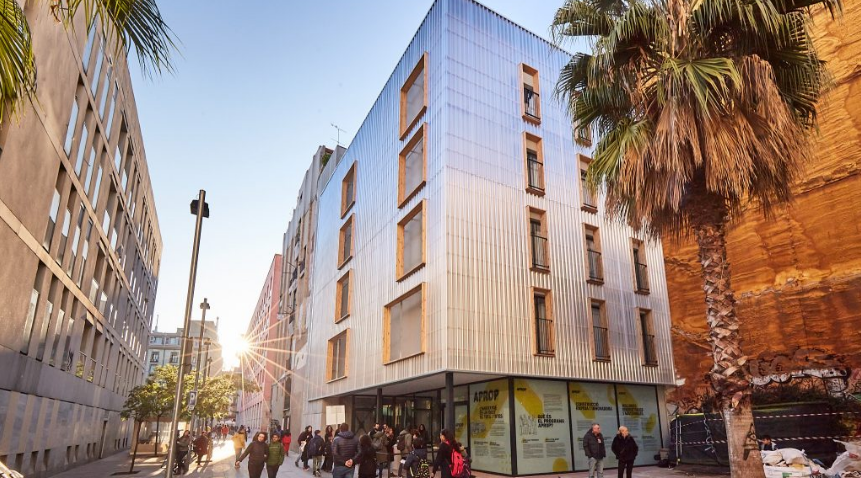
It’s not something you expect in Barcelona’s old town center. But they are certainly there. Twelve container homes on the Nou de Sant Francesc, near the world famous Rambla. As a remedy against the acute lack of social housing. “I honestly think it’s a bit of a gimmick”, says Dutch architect Co Gevers. She’s based in the capital of Catalonia along with her company ‘Zest’.
In other words, the container homes have partly been built with the aim of attracting attention to the major housing problems that Barcelona is facing. That’s what she thinks. “If that really is the case, then that’s obviously a good thing. Because there is practically no housing left in the city for people on the fringes of society,” Gevers explains. “Renting accommodation via Airbnb has taken off to such an extent that the market has collapsed. It’s literally costing a family with kids €1500 to €2000 a month. So people are moving en masse out of the city.”
Sustainable housing
With twelve containers under the name of APROP, the municipal board is trying to find an innovative answer to a multifaceted issue: the housing shortage. These are old containers that were used in shipping and cost between €1000 and €4000 each. The containers have been transformed into sustainable homes for people who have lost their homes elsewhere, for a sum purported to total €940,000. The houses are 30 to 60 m2 in size and feature a living room, kitchen, bathroom and one or two bedrooms.
Whether the local project offers a structurally sound solution is very much in question. They are definitely an eye-catcher in the highly touristy Ciutat Vella. Barcelona does not have the premiere though..The idea of converting containers into student rooms originated in Amsterdam as early as 2002. Approximately one thousand were built and nicknamed ‘keetwoningen’ (shed houses). They still exist today and are even seen by some people as modern and hip. Others see the containers as ‘sardine tins for the poor.’
Ideal as a statement
According to Gevers – who is herself specialized in sustainable design – such projects can only be worthwhile if the containers have actually already been used and can be stacked on top of one another. “If you are going to manufacture new containers to make houses out of, that misses the point,” the architect explains. “The biggest problem is insulation. Residents in The Netherlands often felt the cold. While in Barcelona they will feel warm, especially in the summer. One advantage of the containers is that they can accommodate poor people in the incredibly expensive city center. This makes it ideal as a statement. But not so much as a real home, I think.”







